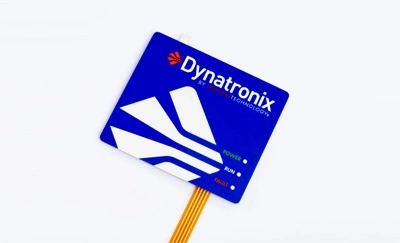
Membrane switches are essential components in many electronic devices, providing tactile feedback and user interface functionality. One critical consideration in designing membrane switches is the choice of LED color. But does the color of the LED significantly impact the cost? In this comprehensive guide, we'll delve into the factors that affect LED costs for membrane switches, helping you make informed decisions for your projects.
Membrane switches are versatile input devices found in various industries, from consumer electronics to medical devices. They often feature LEDs for backlighting, which not only enhances visibility but also adds aesthetic value to the product. When it comes to choosing between white and colored LEDs, cost considerations can play a crucial role in decision-making. Let's explore whether there are significant cost differences between these two options and understand the factors that influence LED pricing.

LED costs for membrane switches can vary significantly due to several factors. Understanding these factors will help you assess whether the color of the LED will impact your project's budget.
LED technology has evolved over the years, resulting in various types of LEDs. Basic LEDs are relatively affordable, while more advanced options like SMD (Surface Mount Device) LEDs tend to be costlier. The choice of LED type can influence the overall cost.
When it comes to colored LEDs, the complexity of the color can affect the cost. Basic colors like red, green, and blue are more common and usually more affordable. However, custom colors or multi-color LEDs can be pricier due to the manufacturing process involved.
Economies of scale come into play when ordering LEDs in bulk. Larger quantities often lead to lower unit costs. Therefore, the number of membrane switches you're producing can impact the overall LED cost.
The choice of LED supplier can make a substantial difference in cost. Some suppliers offer competitive pricing, while others may charge premium rates. Researching and comparing suppliers can help you find the best deal.
If you require customized LED solutions for your membrane switches, such as specific brightness levels or unique packaging, it may come at an additional cost. Customization can be a worthwhile investment if it aligns with your project's requirements.
LEDs with higher power efficiency may cost more upfront but can lead to long-term savings through reduced energy consumption. Consider the energy-efficiency of LEDs when evaluating their cost-effectiveness.
Now that we've discussed the factors affecting LED costs let's address the primary question: Are there significant cost differences between white and colored LEDs for membrane switches?
The answer depends on your specific project needs and budget constraints. In many cases, basic colored LEDs, such as red, green, or blue, are comparable in price to white LEDs. However, if you require custom colors or multi-color LEDs, you may encounter higher costs. It's essential to weigh the aesthetic and functional requirements of your membrane switch against the potential cost differences.
Q: Can I use white LEDs in all membrane switch applications?
A: White LEDs are versatile and suitable for most applications. However, consider factors like visibility and aesthetics when making your decision.
Q: Are there any benefits to using colored LEDs besides aesthetics?
A: Colored LEDs can be used for status indicators, branding, or creating a specific ambiance in your product. Consider their functional aspects alongside cost.
Q: How can I reduce LED costs for my membrane switches?
A: To lower LED costs, explore bulk purchasing options, compare suppliers, and assess whether customization is necessary for your project.
Q: Are custom-colored LEDs worth the extra cost?
A: Custom-colored LEDs can enhance product branding and aesthetics. Assess whether the benefits align with your project's goals and budget.
Q: What are the most common colors used in membrane switches?
A: Red, green, and blue are among the most common colors due to their versatility and affordability.
Q: Is it possible to mix white and colored LEDs in a single membrane switch design?
A: Yes, you can combine white and colored LEDs for specific design requirements. However, this may impact the overall cost.
When it comes to choosing between white and colored LEDs for membrane switches, the cost consideration is just one aspect of the decision-making process. While basic colored LEDs are often cost-competitive with white LEDs, custom colors and unique requirements may lead to variations in pricing. It's essential to evaluate your project's specific needs, including aesthetics, functionality, and budget constraints, to make an informed choice. By understanding the factors affecting LED costs, you can strike the right balance between quality and affordability for your membrane switch project.